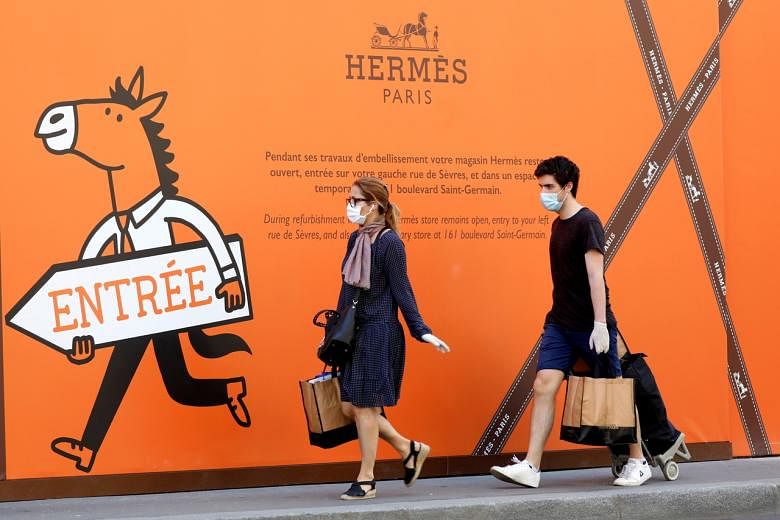(BLOOMBERG) - One takeaway from the third-quarter earnings we have seen so far is that consumers are still spending - and they are reaching for big, well-known brands for everything from food to face cream.
This has played out most dramatically in high-end retail, where in some cases wealthy shoppers are buying more expensive goods than they were a year ago.
There are a few reasons why this may be. As I have noted, some of the spending is coming from savings accumulated during lockdown, and affluent consumers want to get the most bang for their buck.
If they are reaching outside their regular price range or making their first luxury purchase, that often means shelling out for a household name: Louis Vuitton, Christian Dior or Hermes - all of which have seen strong sales recoveries.
It also helps that the biggest companies - LVMH Moet Hennessy Louis Vuitton, Hermes International, Cie Financiere Richemont and Gucci-owner Kering - have the resources to make their brands stand out in a crowded market. They can afford to double down on social media campaigns.
Meanwhile, consumers want tried and tested styles, whether that is a Hermes Birkin bag or a Moncler puffer jacket. With fewer occasions to dress up, as well as an increasing awareness of fashion's environmental costs, shoppers may decide to buy less, but buy better.
All of this favours luxury houses steeped in heritage, such as Hermes, the first high-end group to return to sales growth in the third quarter.
The handbag maker was also helped by the fact that it is less dependent on tourist spending, which accounts for about 20 per cent of sales globally, than its competitors, which see 30 per cent to 35 per cent of sales come from tourists, according to Mr Thomas Chauvet, luxury analyst at Citi.
But the shift in demand from cutting-edge to classic may be more of a challenge for Gucci, where sales excluding currency movements fell 8.9 per cent in the third quarter.
Its flamboyant aesthetic has won a strong following among younger customers. But it is now toning down its ostentatious styles to adapt to more conservative tastes.
Shoppers reaching for the familiar also creates particular challenges for smaller companies. Given the power of the luxury conglomerates and muscular single-brand groups such as Moncler, there may now be more pressure to sell out to them.
Salvatore Ferragamo, for example, has not reported its third-quarter sales yet, but the Italian house's turnaround efforts have been disrupted by the pandemic.
Investors will be watching to see whether Ferragamo and other companies seeking to revive their fortunes, such as Burberry Group, are similarly lifted by the rising luxury tide.
Ferragamo denied this week that it held talks with investors over a potential stake sale. But the family-controlled group would be wise not to turn its back on any options.
The strides that the mega-brands have made this year will make it harder for smaller houses to gain traction with the wealthiest shoppers, even as a strong recovery in demand for luxury is expected in 2021.
Of course, there is a possibility that consumer tastes pivot back toward experimentation when the world returns to some semblance of normality. But that future seems far away and far from certain.
Even if shoppers do want less familiar, more edgy designs, companies will need to reach them online and through social media channels.
Having the best retail locations and hottest designers will also remain crucial. That means continued investment for all groups, big and small.
If life continues to get tougher for more niche brands, the next hot trend in luxury could be a shakeup of industry ownership.
Andrea Felsted is a Bloomberg Opinion columnist covering the consumer and retail industries. She previously worked at the Financial Times.

